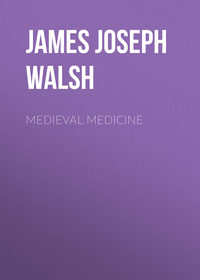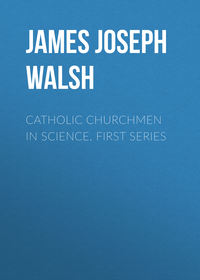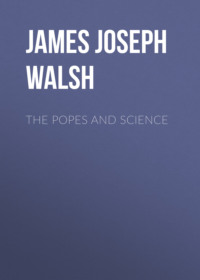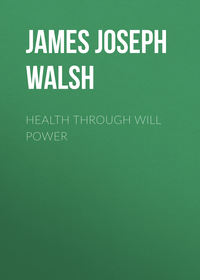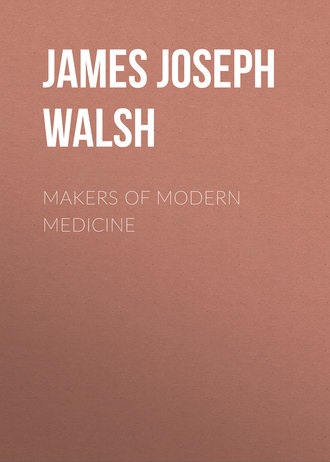 полная версия
полная версияMakers of Modern Medicine
In medicine we owe to Jenner the first hint of the possible connection between rheumatism and heart disease. He pointed out, at a discussion in a little English medical society, how often affections of the heart occurred in those who had suffered from previous attacks of rheumatism. He was among the first, perhaps the very first, to hint at the pathological basis of angina pectoris. While Heberden's name is usually connected with this discovery, there seems good reason to think that already Jenner had independently noted and called attention to the frequency with which degenerative affections of the arteries within the heart muscle itself were to be found where during life heart-pang had been a prominent and annoying symptom.
Besides these important advances in medicine made by him, and his great discovery of the identity of cowpox and smallpox, Dr. Jenner was an interesting observer of phenomena in all the biological sciences, and in geology and palaeontology. He was a great friend of Dr. John Hunter, who frequently suggested to him the making of such experiments and observations as were more likely to succeed in the country than in the city, and one cannot help but be struck with the determination evinced all his life to take nothing on authority, but to test everything by actual observation, and above all not to theorize where he did not have the actual data necessary for assured conclusions; and even where he thought he had them, his wonderful faculty for waiting until they had properly matured, and their true significance had become evident, stamped him for all time as a model for scientific investigators.
Undoubtedly Jenner's greatest work was that of determining the value of vaccination. His patient investigation of this subject, the thorough conservatism with which he guarded himself from publishing his conclusions until he had tested them in every way, the absence of that haste to rush into print so characteristic of most present-day medical investigators, and which is the cause of so much disappointment in modern medicine, all distinguished this country physician as one of the greatest investigating geniuses that medicine has produced. His life is a mirror for the medical student and the investigating practitioner of medicine. His discovery was so complete when he finally announced it that but very little has been added to it since. His invention came from his mind as Minerva from the brain of Jove fully armed for the conflict that was sure to come. In this Jenner resembled very much Laennec and the other investigating geniuses in medicine. As a matter of fact only one improvement has been made in the preparation of vaccine material since Jenner's time, and that is the incorporation of glycerin in very recent years, which gradually destroys any micro-organisms that may be present, leaving the vaccine virus itself unimpaired in its efficacy, though without the possibility of inflicting those secondary infections which for so long cast a shadow on vaccination.
Dr. Edward Jenner was the third son of an Anglican clergyman, his mother being the daughter of a clergyman who had been at one time prebend in the cathedral of Bristol. The family held considerable property in Gloucestershire. He received his early education at Wotton-under-Edge and later at Cirencester, the old Roman town in Gloucestershire. While he acquired a good working knowledge of the classics, from his earliest years he was interested in natural history. Before he was nine he made a collection of the nests of the dormouse. The hours that other boys spent at play he devoted to searching for fossils or other interesting natural curiosities.
After his preliminary education had been finished he was apprenticed to Mr. Ludlow, an eminent surgeon at Bristol, and after two years here he went to London, where he had the privilege of residing as a favorite pupil in the family of John Hunter for two years. At this time Jenner was in his twenty-first year, John Hunter in his forty-second. Hunter was not then a public lecturer, but he had been for two years surgeon to St. George's Hospital, and for nearly five years had been engaged in studying the habits and structure of animals in a menagerie and laboratory which he had established at Brompton. The inspiration of Hunter's original genius meant much for young Jenner. He learned not only to respect the teacher but to love the man. In Hunter's unquenchable desire for knowledge and love of truth there was something very congenial to the spirit of Jenner, who was himself, above all things, an inquirer.
After completing his two years of work with Hunter he still remained intimately associated with him by letter. Though later in life Jenner's correspondence became very voluminous, these letters from Hunter were always very carefully preserved in a special cover, and they serve to show how stimulating to the young man must have been Hunter's virile enthusiasm for truth as it could be deduced by observation and experiment.
It was to Hunter that Jenner once wrote that he had heard it said in Gloucestershire that the dairy workers who suffered from a certain disease caught from the udders of cows and called cowpox were protected thereafter from attacks of smallpox. He added that this tradition interested him very much and that he intended to think about it. "Don't think," wrote Hunter to him, in return; "make observations, investigate for yourself the truth of the tradition." Jenner did so, and the result is now known to all.
These letters from Hunter contained many other interesting suggestions. For instance, it was under Hunter's direction that Jenner succeeded in finding out that in hibernating animals the temperature is very much reduced and the respirations are very slow, while the rate and force of the pulse are often so much diminished as to be scarcely more than noticeable at the extremities. Between Hunter and Jenner it had already been discovered that the sap in trees will not freeze at temperatures much lower than that at which the same fluid freezes when withdrawn from the tree, and the same thing seemed to be true with regard to the blood of hibernating animals. He learned that notwithstanding the low temperature to which it is reduced the animals are not affected particularly by the cold, though their store of fat is consumed and they awake very hungry in the spring-time.
Besides hibernation Jenner also investigated the habits of the cuckoo, that crux of the biologist which insists on foisting its eggs upon other birds and allowing its orphan young to be brought up in alien nests, while the real young of the deceived foster-parents are often pushed out of their nests by this burly intruder which grows so fast and strong. It is needless to say, this subject interested John Hunter very much and there are a number of letters which passed between them on the subject.
It must not be supposed, however, that young Jenner was entirely occupied with his scientific work to the exclusion of social life and recreation. He was one of the best-known men of the county, and was looked upon as a genial companion from whom might be expected on almost any occasion pleasant jests and epigrams, not too biting, with regard to friends and acquaintances. Some of these have been preserved and we quote several of them as indicative of his special vein of humor.
ON THE DEATH OF A MISER"Tom at last has laid by his old niggardly forms,And now gives good dinners; to whom pray?–the worms."ON LORD BERKELEY'S HUNTSMAN, WHO DIED IN THE CHASE"Determined much higher to hoist up his name,Than Nimrod the hunter, in annals of fame,'Hark forward!' cried Charles, and gallantly whirledHis high-mettled steed o'er the gates of the world."DEATH AND MR. PEACH A Short Dialogue. N. B.–Mr. P. died in April "P.–Awhile forbear thy horrid gripe, Do pray, dread Sir! remember Peaches are never fairly ripe 'Till August or September." "D.–To gratify my longing taste, And make thy flavour fine, I had thee in a hot-house placed, And moistened well with wine.""Mr. Peach had shortened his life by the too free use of the bottle."
We have said that Dr. Jenner's supreme accomplishment in science was the working out of the vaccination problem to a great humane conclusion. His discovery was no mere accident, nor chance confirmation of a medical tradition. He devoted himself for many years to the study of cowpox, as he had the opportunity to see it, and it is what we know of this investigation, his patience and care in eliminating all the factors of error, that stamped Jenner as a medical scientist worthy of honor. When he began practice in Berkeley, he made many inquiries among his professional brethren, with regard to their opinion of the protecting power of cowpox, but most of them had either paid no attention to such reports, or shook their heads at once, and said they were at most popular traditions, due merely to coincidences and unsupported by any credible evidence. In the face of this, Jenner began to follow John Hunter's advice to investigate. The first careful investigation dates from about 1775, and it took him more than five years to clear away the difficulties surrounding the solution of the question, in which he was interested.
As Pasteur found in the next century, when investigating the silkworm disease, Jenner soon learned that there was more than one disease called cowpox, and that the confusion consequent upon the existence of at least two specific diseases and a number of skin affections of the hands of various kinds, which existed among dairy workers, made the recognition of the protective power of true cowpox extremely difficult. After he had differentiated genuine cowpox, however, there was no difficulty in tracing its apparent protective power. He soon found, however, that the protection was not afforded unless the cowpox had been communicated at a particular stage of the disease. In other words, after the true vaccinia has run its course, secondary affections of the skin of the cows usually take place, and if dairy workers became infected from these lesions, then no protection against smallpox is afforded them. Another important observation that Jenner made at this time was that the disease known as grease in horses is the same affection as cowpox, and that both of these diseases are smallpox as modified by the organism in which they develop. It may be said at once that this opinion so difficult to arrive at, more than a century ago, when so little was known of comparative pathology, is held at the present day, and was confirmed by the last series of investigations made under the auspices of the Jenner Society, in England.
One difficulty that confronted Jenner in his researches was the fact that cowpox was scarce in his part of the country, and he had no opportunity of making inoculations with the disease in a proper stage, so as to put his suspicions to an absolute test. He collected much information, however, and stimulated others to the making of observations, so that when his discovery was announced the mind of the medical profession was more ready to receive it. In 1788 he carried a carefully made drawing of a case of cowpox as it occurred on the hands of a Gloucester milkmaid to London, and showed it to a number of medical men, whose opinions he wished to obtain. Among these was Sir Edward Holme, who agreed that there was a distinct similarity between it and certain stages of smallpox and considered that the question of a connection between the two diseases was an interesting and curious subject. He did not share any of Jenner's views, however, with regard to the practical importance of his discovery in this matter, and gave little encouragement to the idea that a possible prophylactic for smallpox might be discovered.
Something of Jenner's enthusiasm for experiment may be gathered from the fact that he did not hesitate even to inject various materials related to cowpox into the arm of his own children. We know Mrs. Jenner to have been a very wonderful woman, quite as deeply interested as the doctor himself in securing the great benefit to humanity that would result from the demonstration that cowpox protected against smallpox, but it is a little bit difficult for us in these days to understand how her mother-heart could have permitted some of the experiments which Dr. Jenner's biographer, Dr. Baron, describes. 1
The subject is indeed so surprising that I prefer to quote the passage with regard to these experiments directly from Dr. Baron:
"In November, 1789, he inoculated his eldest son Edward, who was then about one year and a half old, with swine-pox matter. The progress of the disease seemed similar to that which arises from the insertion of true smallpox matter when the disease is very slight. He sickened on the eighth day: a few pustules appeared; they were late and slow in their progress, and small. Variolous matter (this would mean material from a smallpox patient calculated to give that disease) was carefully inserted into his arms at five or six different periods, subsequently without the slightest inflammation being excited in the part.
"On Thursday, April 7th, 1791, variolous matter was again inserted by two small incisions through the cutis, [beneath the skin]. Then the following notes of observed conditions day after day are made: 9th, Evidently inflamed. 10th, An efflorescence of the size of a shilling spread round the inferior wound. 11th, The incision assumed a kind of erysipelatous elevation: the efflorescence much increased. 12th, These appearances much advanced. 13th, A vesicle, containing a brownish fluid, and transparent, about the size of a large split-pea on the superior incision, the inferior about twice as big; the surrounding parts affected with erysipelas. The erysipelas extended to the shoulder, and then pretty quickly went off. The child showed no signs of indisposition the whole time."
"March, 1792. E. Jenner was again inoculated: the matter was taken from a child that caught the disease in the natural way, and had it pretty full. It was inserted fresh from the pustule. The same evening an inflammation appeared round the incision, which, at the end of twenty hours, increased to the diameter of a sixpence, and some fluid had already been collected on the lips of the scratch, which the child had rubbed off."
It was not for five years after this time, however, that Jenner was able to make his crucial experiments in the matter. On the 14th of May, 1796 (the date is still recalled as Vaccination Day in Germany, especially in Berlin), vaccine matter was taken from the hand of a dairy maid, Sarah Nelmes, and inserted by two superficial incisions in the arms of James Phipps, a healthy boy of about eight years of age. The boy went through an attack of cowpox in a regularly satisfactory manner. After this, however, it was necessary to determine whether he was protected from smallpox. After waiting two months Jenner inoculated him with variolous material. The result of this experiment can best be learned from the following letter written to his friend Gardner:
"Dear Gardner:
"As I promised to let you know how I proceeded in my inquiry into the nature of that singular disease the Cow Pox, and being fully satisfied how much you feel interested in its success, you will be gratified in hearing that I have at length accomplished what I have been so long waiting for, the passing of the Vaccine Virus from one human being to another by the ordinary mode of inoculation.
"A boy of the name of Phipps was inoculated in the arm from a pustule on the hand of a young woman who was infected by her master's cows. Having never seen the disease but in its casual way before; that is, when communicated from the cow to the hand of the milker, I was astonished at the close resemblance of the pustules, in some of their stages, to the variolous pustules. But now listen to the most delightful part of my story. The boy has since been inoculated for the smallpox which, as I ventured to predict, produced no effect. I shall now pursue my experiments with redoubled ardour.
"Believe me yours, very sincerely,
"Edward Jenner.
"Berkeley, July 19, 1796."
Notwithstanding the complete success of this experiment, Jenner did not rush into print with it. Two years later, at the end of June, 1798, his "Inquiry into the Causes and Effects of the Variolae Vaccinae" was published. In the mean time Jenner had succeeded in demonstrating the protective quality against smallpox of vaccination, contracted either casually or by direct inoculation, in some twenty-three cases. Sixteen of these had occurred accidentally in the course of occupations connected with cows and horses; the rest were done under Jenner's directions. Among the persons inoculated was Jenner's own little second son, Robert Fitts Harding Jenner, an infant eleven months old. Jenner demonstrated conclusively that the cowpox protects the human constitution from the infection of smallpox.
After Dr. Jenner had made his tests he prepared a pamphlet for publication. Before publishing, however, he thought it better to make a visit to London, so that he might have the opportunity to introduce the subject personally to friends, and demonstrate the truth of his assertion to them. He remained in London for nearly three months without being able to find any one who would submit to vaccination. The medical profession generally took very little interest in the subject and seemed to consider him sadly visionary. Under the circumstances it is not surprising that Jenner went back to Gloucestershire, and his country practice, rather disappointed. It happened, however, that soon after his return home, a distinguished London surgeon named Cline resolved to make a trial of the vaccine material which Jenner had left with his friends. The surgeon's purpose in using it, however, was not altogether to test its efficacy as a prophylactic against smallpox, but with the notion that the counterirritation thus obtained might be useful in a case which he had under treatment. Those were the days when the seton and the issue were still in common use, and counterirritation was considered one of the most important remedial measures at the command of the surgeon.
The patient was a child suffering from a form of chronic hip-joint disease that at this distance of time, and with rather incomplete descriptions, seems to have been the ordinary tuberculosis of the hip. The vaccine material was inoculated over the joint and, surprising though it may appear now, the vaccine vesicle ran rather a normal course and healed kindly. The little patient was afterward inoculated with smallpox and found to be incapable of acquiring that disease. This case attracted considerable attention. It is not, however, a matter for congratulation as regards the openness of mind of the medical men of the period to find that this was the only sort of a case that was considered suitable for such an experiment. It is very easy to understand that in a child in a run-down condition the vaccine material might very well have provoked a rather serious local reaction. In a way, the fate of vaccination hung in the balance and good luck was in its favor. Mr. Cline, however, after this, became a strong advocate of vaccination, and brought it very decidedly before the London physicians. There was still a feeling of opposition, as indeed there always is against any novelty in medicine, but this gradually disappeared, to give place to a suspension of judgment, until more accurate and detailed information could be obtained from further observations and tests.
It was not long before the opposition to the practice of vaccination took definite form. One of the best-known London physicians of the time, Dr. Ingenhouz, became the leader of a strong faction of the medical profession of London, who not only would have nothing to do with vaccination, but proclaimed openly that it was a dangerous innovation, absolutely unjustifiable, and communicated a disease without protecting against any other. On the other hand, there were overzealous advocates of vaccination, who insisted on its value but did not know how to recognize the true cowpox from other lesions sometimes confounded with it, nor the exact stage of the disease in which the vaccine material obtained would prove effectively protective. A number of these used vaccine material so contaminated by secondary infections of one kind or another that no wonder serious sores were reported as a result.
Physicians who have for many years known how difficult it is to bring certain people to a recognition of the benefits that have been conferred on modern civilization by vaccination, will appreciate how many difficulties and prejudices and misunderstandings Jenner himself must have encountered during the original introduction of vaccination. Some of the supposed objections to vaccination wear a very modern air, and come from physicians whose only purpose apparently is to bring out the truth, and yet who are evidently led to the drawing of conclusions much wider than their premises by the fact that they know they will have an attentive audience among the anti-vaccinationists at least.
A fair example of one of these old-time objections against vaccination may be found in the following passage from a letter by Dr. Jenner written to Mr. Moore. Corresponding objections have been made in much more modern times, and the passage will arouse the sympathetic amusement of present-day physicians:
"You probably may not have seen a pamphlet lately published by Dr. Watt of Glasgow, as there is nothing in its title that develops its purport or evil tendency: 'An Inquiry into the Relative Mortality of the Principal Diseases of Children,' &c. The measles, it seems, have been extremely fatal in the city of Glasgow for the last four or five years among children, and during this period vaccination was practised almost universally. Previously to this, the measles was considered as a mild disease. Hence Dr. Watt infers that the smallpox is a kind of preparative for the measles, rendering the disease more mild. In short, he says, or seems to say, that we have gained nothing by the introduction of the cow-pox; for that the measles and small-pox have now changed places with regard to their fatal tendency. Is not this very shocking? Here is a new and unexpected twig shot forth for the sinking anti-vaccinist to cling to. But mark me–should this absurdity of Mr. Watt take possession of the minds of the people, I am already prepared with the means of destroying its effects, having instituted an inquiry through this populous town and the circumjacent villages, where, on the smallest computation, 20,000 children must have been vaccinated in the course of the last twelve years by myself and others. Now it appears that, during this period, there has been no such occurrence as a fatal epidemic of measles. You would greatly oblige me in making this communication to the Board, with my respectful compliments."
Fortunately only a few colleagues were so illogical, and an excellent idea of how much Jenner's discovery was appreciated by his contemporaries may be obtained from the number of honors, diplomas, addresses and communications from public bodies and distinguished individuals which he received. A chronological list of these may be found at the end of Dr. Baron's Life of Jenner. Among them may be noted the diploma of LL.D. from the Senate of Harvard University, Cambridge, Mass., under the presidency of Dr. Willard; also the Diploma of Doctor in Medicine, honoris causa, which Jenner especially appreciated, as he says in one of his letters, because he understood that the University conferred this degree in this way only once or twice in a century. There is a diploma as Fellow of the American Society of Arts and Sciences in Massachusetts, as well as a Diploma as a member of the American Philosophical Society at Philadelphia. The diploma from Boston bears the signature of John Adams as president, that from Philadelphia the signature of Thomas Jefferson. Most of the prominent medical and scientific societies of Europe had elected him a member or had sent him some special token of recognition.
One of these documents, expressive of the gratitude of the senders for the great benefit his work had conferred upon the human race, which Jenner valued the highest, was an address from the Five Indian Nations which, with a Wampum Belt, was delivered to him on November 8, 1807. In reply to this Dr. Jenner wrote to the American agent through whom the insignia had been forwarded:
"Sir:
"Your kindness in delivering to the Five Nations of Indians my Treatise on vaccination, and in transmitting to me their reply, demands my warmest thanks.








